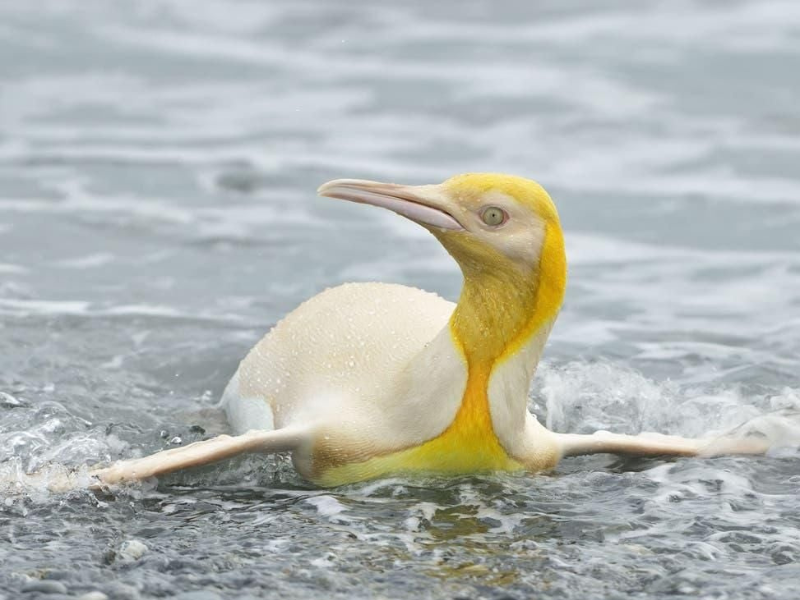In 2019, wildlife photographer Yves Adams made an extraordinary discovery on the remote island of South Georgia—a golden king penguin standing out in a colony of over 100,000 birds. This stunning penguin, with its vibrant yellow plumage instead of the usual black and white, is believed to have leucism, a rare genetic condition affecting pigmentation. The sighting was a once-in-a-lifetime moment, showcasing nature’s ability to surprise and amaze.
This article explores the fascinating details of this golden penguin, the science behind its unique coloring, and why such discoveries are so rare.

The Discovery of the Golden King Penguin
During an expedition to South Georgia, a sub-Antarctic island teeming with wildlife, Yves Adams noticed something unusual—a penguin with golden-yellow feathers instead of the typical black, white, and orange hues of a king penguin.
Adams described the moment as “unforgettable”—the bird stood out like a beacon among its monochrome peers. Given that king penguins usually number in the hundreds of thousands in their colonies, spotting this unique individual was like finding a needle in a haystack.
Why Is This Penguin Golden? The Science Behind Its Color
The golden penguin’s unusual appearance is likely due to leucism, a genetic mutation that causes a partial loss of pigmentation. Unlike albinism (which results in a complete lack of melanin and often red or pink eyes), leucism leads to reduced coloration in patches or across the entire body.
In this case, the penguin’s dark melanin pigments were suppressed, allowing its yellow and orange carotenoid pigments (derived from its diet of fish and crustaceans) to dominate. This created its golden sheen, making it one of the most visually striking penguins ever documented.
How Rare Is a Golden Penguin?
Leucistic and albino animals are rare in the wild, but a golden penguin is even more exceptional. Some key reasons why this sighting is so unique:
- Genetic Rarity – Leucism occurs in less than 1 in 20,000 penguins.
- Survival Challenges – Penguins rely on their black-and-white coloring for camouflage while swimming. A golden penguin may be more visible to predators like leopard seals and orcas.
- Social Implications – Some animals with unusual coloring face rejection from their groups, though this penguin appeared to be accepted by its colony.
Given these factors, it’s possible that only a handful of golden penguins have ever existed—and even fewer have been photographed.

The Significance of This Discovery
Yves Adams’ golden penguin photos went viral, captivating scientists and nature enthusiasts alike. But beyond its beauty, this discovery is important for several reasons:
- Genetic Research – Studying leucistic animals helps scientists understand mutations and evolution in wildlife.
- Conservation Awareness – Rare sightings like this highlight the importance of protecting remote ecosystems like South Georgia.
- Wildlife Photography Milestone – Adams’ images are a reminder of how much of the natural world remains undocumented.
Could There Be More Golden Penguins?
While this is the most famous case, other unusually colored penguins have been spotted:
- A white gentoo penguin was photographed in Antarctica in 2020.
- An almost entirely black penguin was seen in South Georgia in 2010.
However, none have matched the striking golden hue of Adams’ king penguin. Scientists believe such mutations may occur sporadically, but most go unseen due to the penguins’ remote habitats.
Conclusion: A Reminder of Nature’s Wonders
The golden king penguin is a breathtaking example of nature’s unpredictability. Its rare coloring, likely caused by leucism, makes it one of the most extraordinary wildlife sightings in recent years.
For photographers, scientists, and animal lovers, this discovery is a reminder that Earth still holds countless mysteries—and that even in a colony of 100,000 penguins, nature can produce something truly one-of-a-kind.






